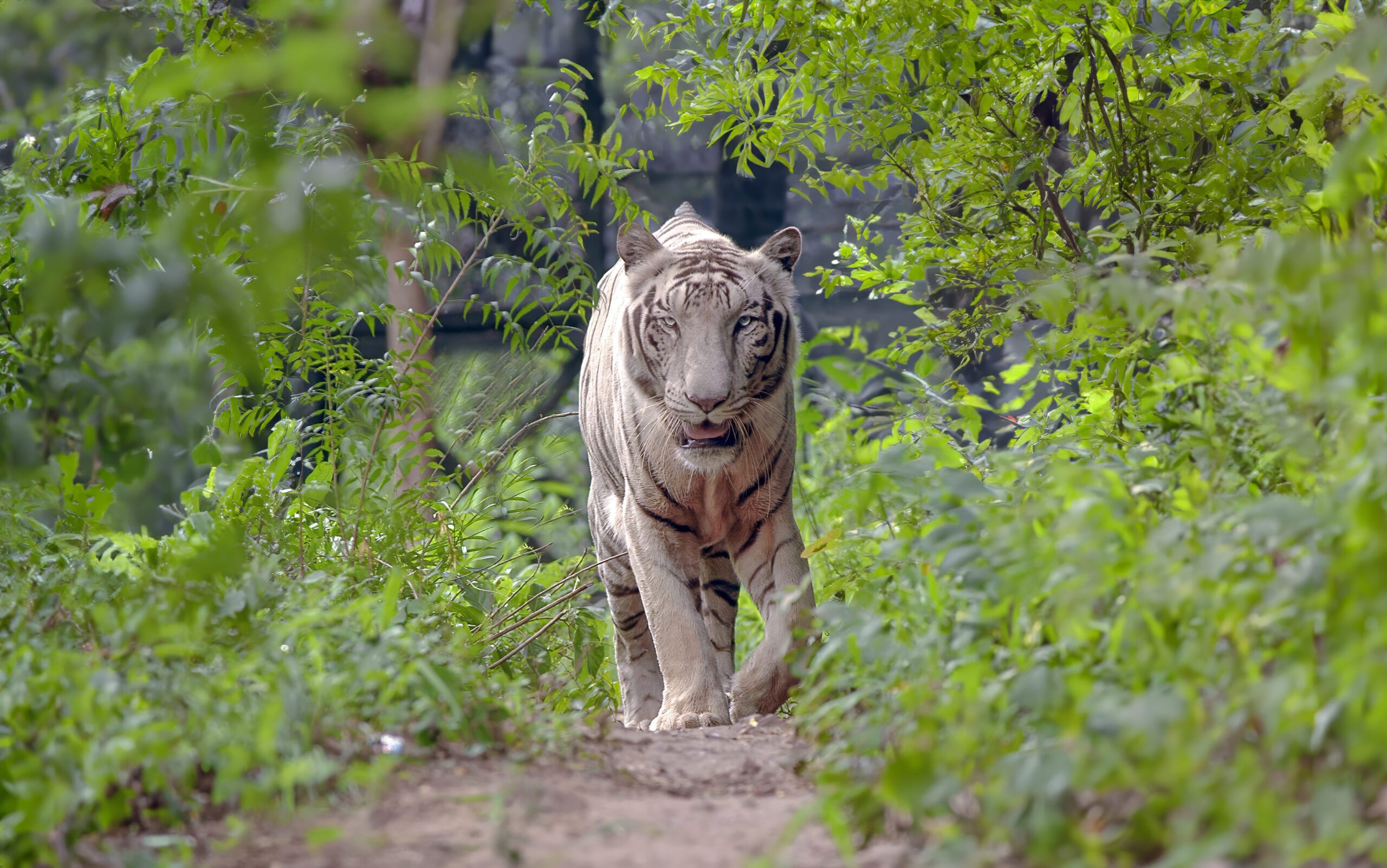The name Bandhavgarh immediately conjures up images of tigers. And why not? After all its known for the highest density of tigers in India. Once upon a time, the white tigers roamed around freely in this diverse, ever flourishing landscape.
Declared a protected national park in 1968, and later a tiger Reserve in 1973, Bandhavgarh has its own fascinating history steeped in mythology and untamed wilderness.

The White tigers, the lesser spoken about forest denizens of India inhabited this mythological land of Ram-Lakshman, Lord Vishnu, amidst the valour and traditions of the Gond dynasty.
Royalty and Chivalric Status
The Bandhavgarh fort is believed to be gifted and passed on to different dynasties. Ram gifted it to Laxman after the Lankan victory. It was thereafter ruled by Mauryans, Vakataks, Sengars, Kalachuris, and eventually the Baghels.
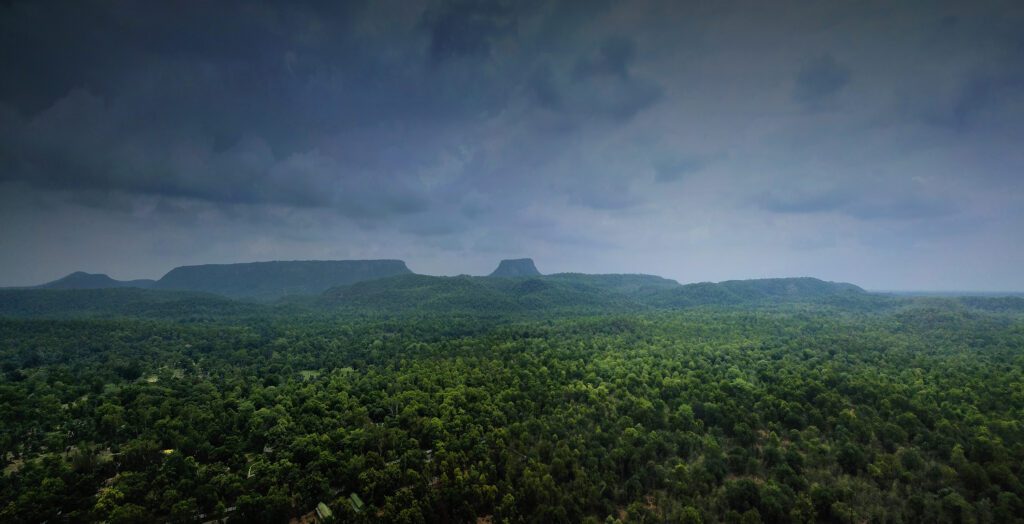
The fort was presented by a Kalchuri King to Karan Deo (a Baghel King) after he married his daughter. The Baghel king ruled the fort till the 17th century, and then later moved the capital to Rewa.
The fort was still under Baghel kingdom, but eventually went on to become a hunting palace. Multiple tigers were hunted by royal families around the forest of Bandhavgarh.
As a symbol of chivalry the Rajahs and princess would have to bring down 109 tigers in their lifetime. Maharaja Gulab Singh shot his first tiger in 1919, and later killed 83 tiger in a single year, in the pursuit of nailing the figure of 109. He killed a total 616 tigers in his life time!
Also Know: Best Places to see Tigers in India
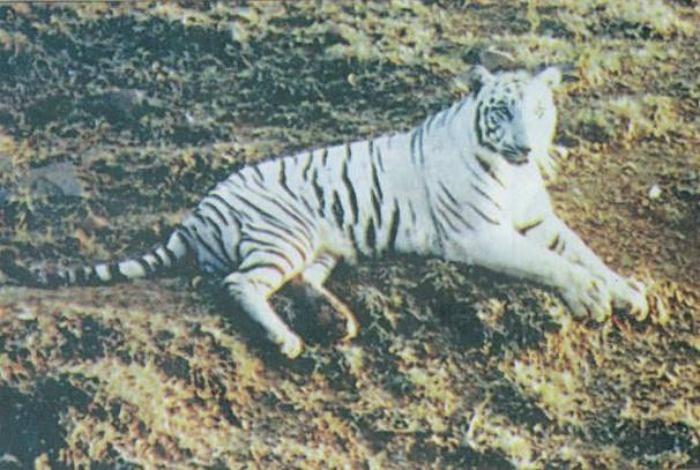
The Story of Mohan – The First White Tiger in Captivity
Maharaja Martand Singh, preceded his father Maharaja Gulab Singh and he shot 131 tigers in his lifetime. On one such hunting expedition in the adjoining jungles of Bandhavgarh in 1951, the Maharaja came across a tigress with four cubs, of which one cub was a white cub. The tigress and her three other cubs were shot down, but the white tiger cub was captured and brought back to the palace.
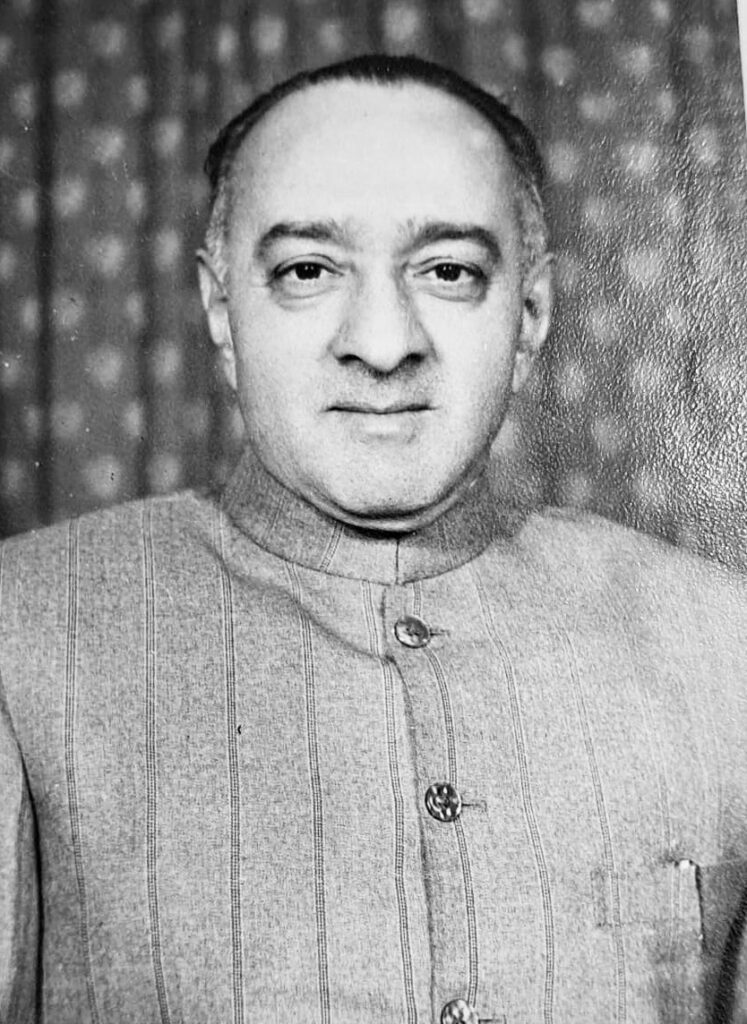
Credits: Asad Khan
This was not the first white tiger sighting. Previously they were all shot down. Maharaja Martand Singh did not appreciate hunting of white tigers, and he had this ardent desire to capture one. Therefore, the lone white cub was captured on the fateful summer of 1951.
The Maharaja named this cub, Mohan (“charming” or “enchanting”, also one of the many forms of Lord Krishna.)
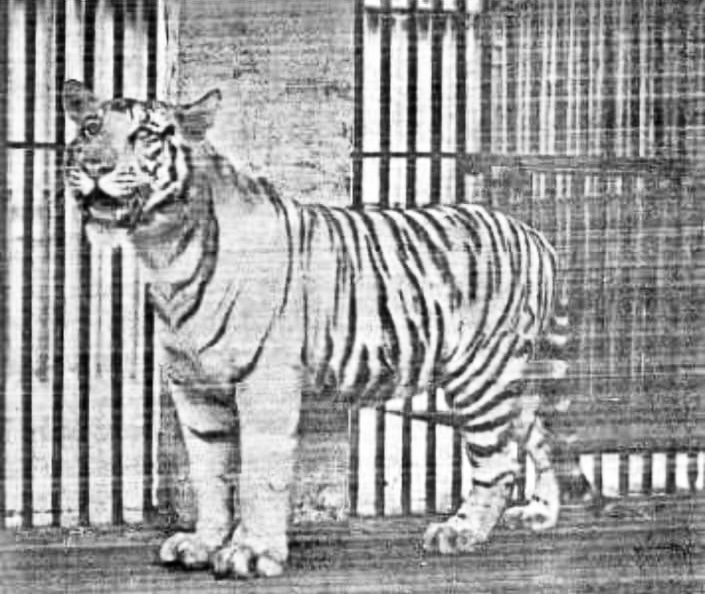
Mohan was shifted to Bagh Mahal, in Govindgarh fort which was located in the forests. Maharaja Martand Singh was also born in this palace, therefore he had a special attachment to this fort.
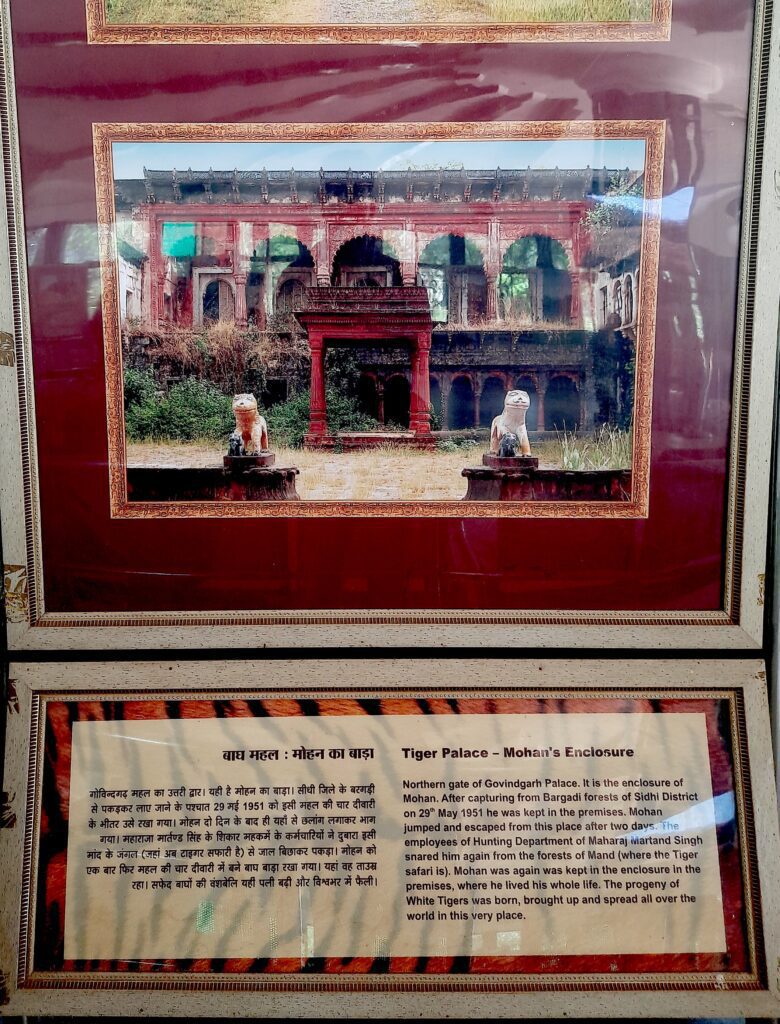
Credits: Team Kings Lodge, Bandhavgarh
The white tiger cub got a royal mansion to live in and had an army of attendants. But, Mohan resented his captivity, despite the majestic treatment. He escaped once from the Govindgarh fort, but was captured and brought back.
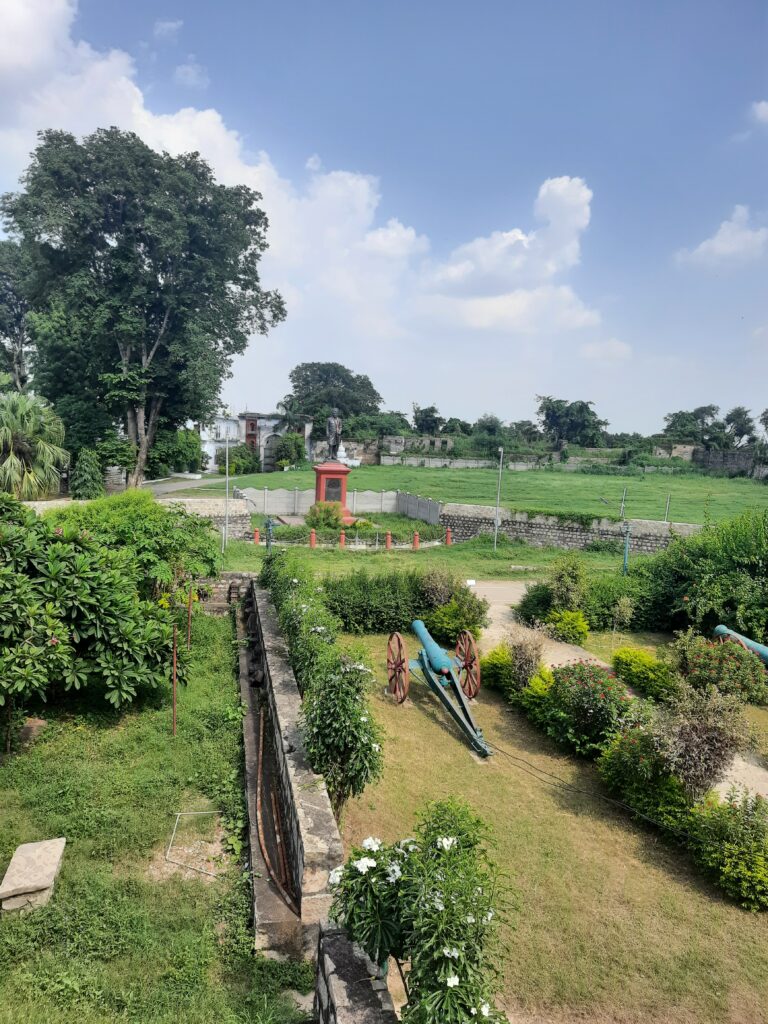
Maharaja Martand Singh visited Mohan every day, from his palace in Rewa; a 20 km long trek. Mohan began to recognise the Maharaja and started to respond and develop a bond with him.
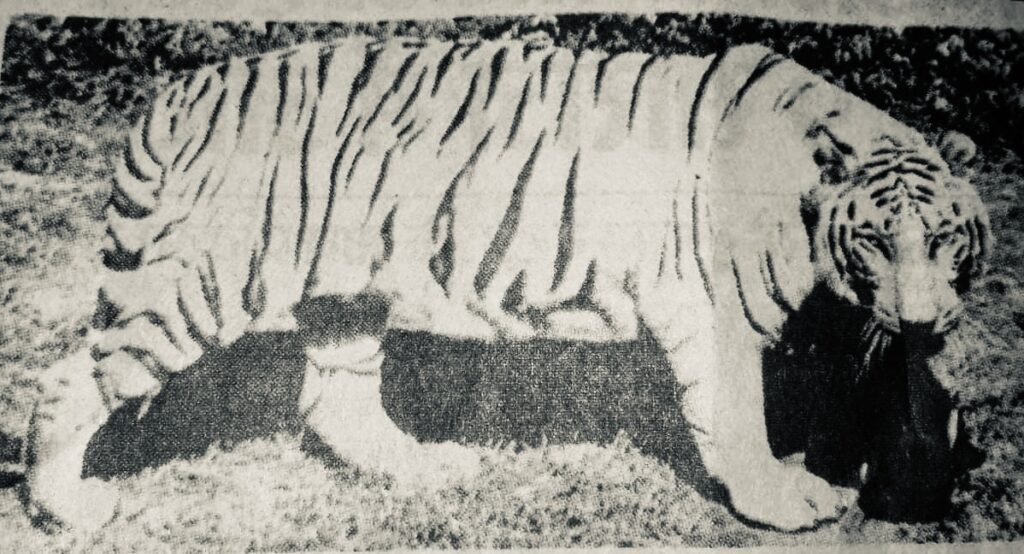
As Mohan grew into a handsome older tiger, he was first mated with the another regular captive tigress called Begum. On three occasion they produced regular cubs.
Later, as an experiment to have more white tiger cubs Mohan was bred with his daughter Radha who was an orange colour tiger, but had her father’s white genes. Thereafter, Radha gave birth to four white cubs and they were named as Raja, Rani, Mohini and Sukeshi.
White Tigers around the Globe
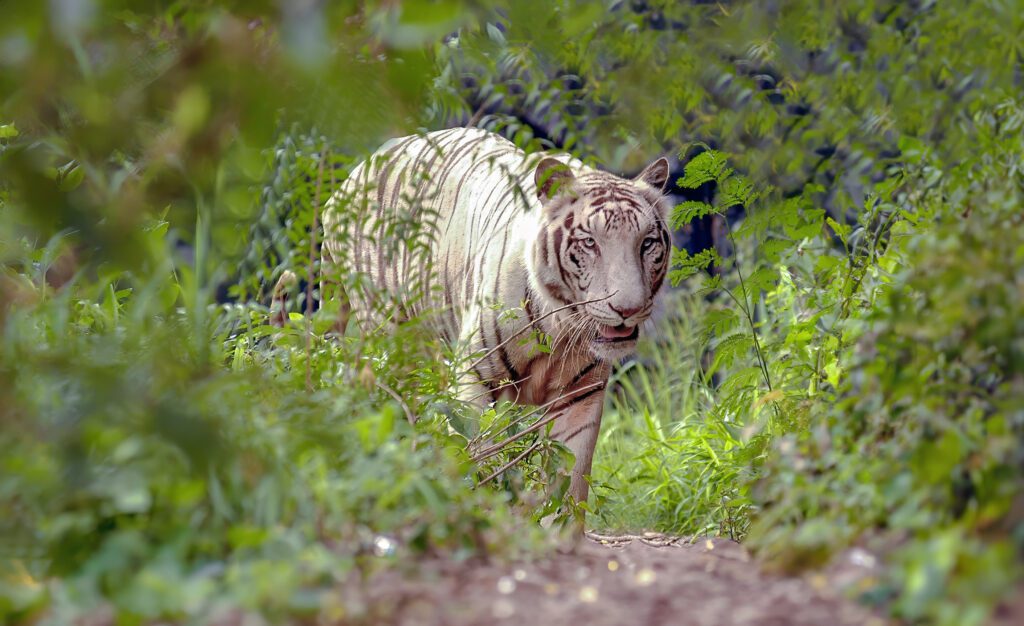
Mohan’s progeny expanded over the years, through captive breeding. The captive white tigers seen across the world today, are believed to be Mohan’s clan. They were gifted, or sold to various officials and zoological parks (zoos) around the globe, including President Eisenhower of America, Bristol Zoo, including the ones in India, Singapore, Australia other parts of Asia and beyond.
As per records, the last wild white tiger was shot in 1958.
Genetics of White Tigers
White tiger are often mistaken as snow tigers for their colour, but they are tigers born with partial loss of pigmentation known as leucism. Leucism causes white coloration (white patches, spots, or splotches on the skin or fur). Leucism is different from albinism, because it does not affect the pigment cells in the eyes.
White tigers have stripes and are not albinos.
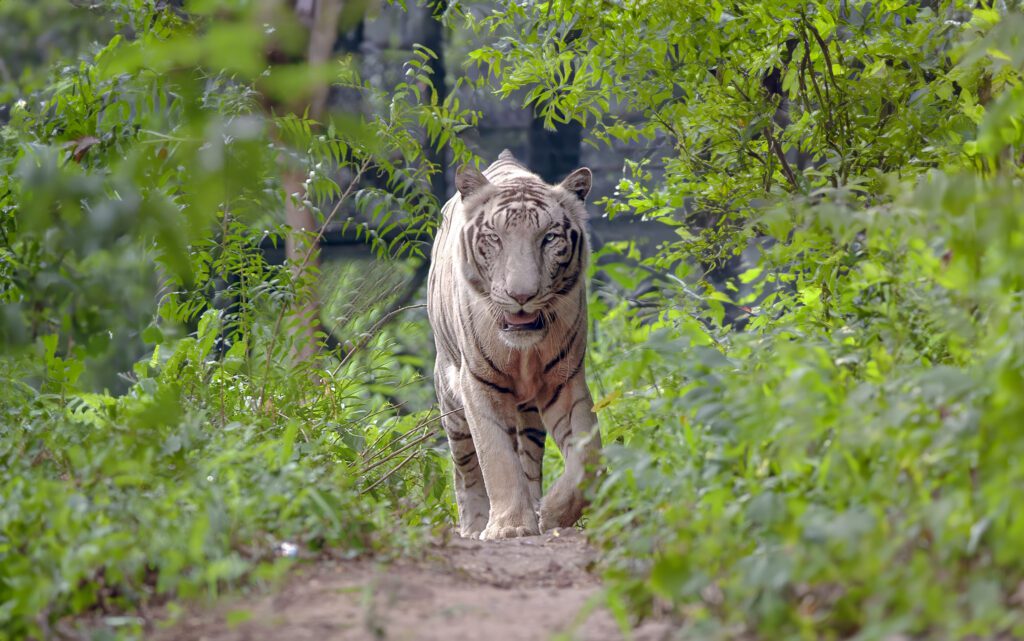
Mohan, the White Tiger’s Last Journey
Mohan spent a flourishing life, expanding his lineage and legacy while in captivity. He fell seriously ill at the age of 19. This was extremely distressing for the Maharaja Martand Singh, and he intervened with every possible medical treatment. But, Mohan was in the last leg of his journey.
A detailed program was chalked out for Mohan’s final rites. He passed over on 18 December, 1968. He was given a heart-warming send off by the Maharaja, his retinue, and the people of Rewa.

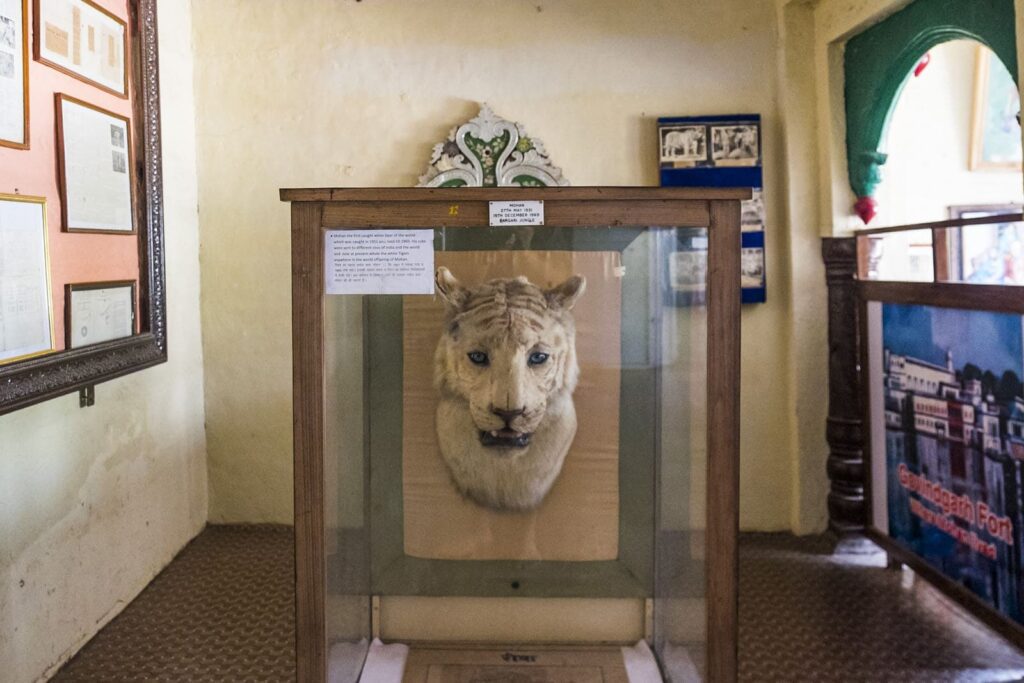
Mohan is believed to be the last recorded white tiger born in the wild. He spread his legacy far and wide.
The Indian forests remain bereft of white tigers. Though a two odd sightings have been reported between 2017 and 2020, in Nilgiri and Kaziranga respectively.
Which are the Best place to see White tigers in India?
White tiger can be seen in zoological parks of India like – Maharaja Martand Singh Ju Deo (MMSJD) White Tiger Safari and Zoo, Mukundpur, Rewa (Madhya Pradesh), Alipore Zoological Gardens (West Bengal), Nandankanan Zoological Park (Odisha).
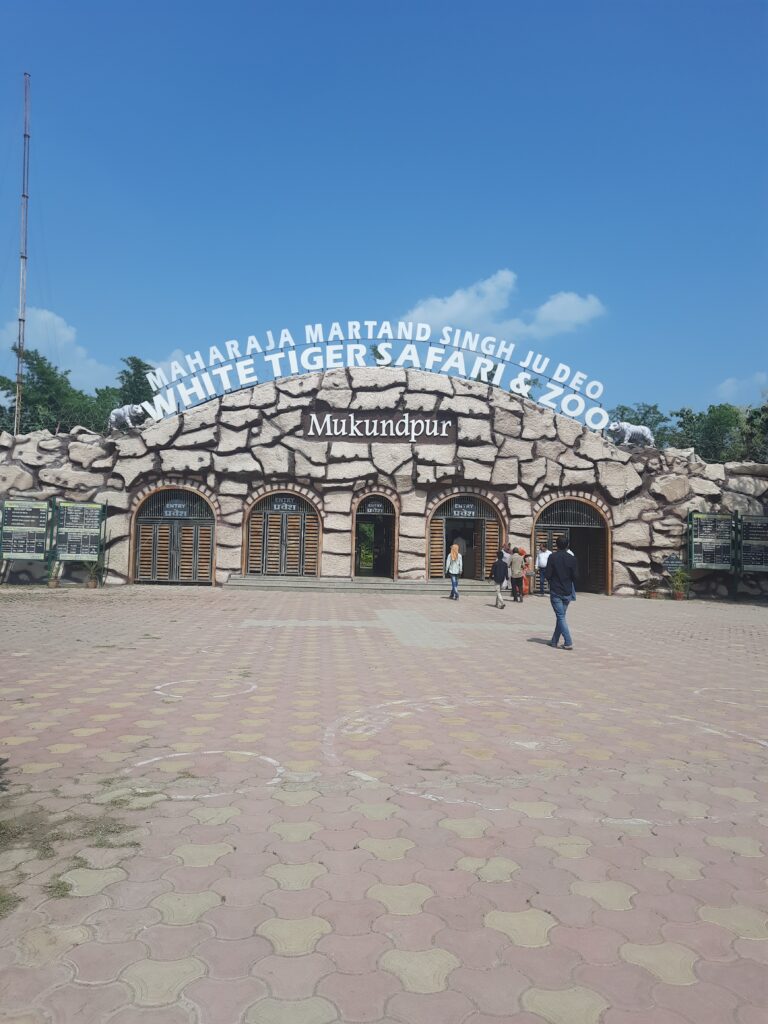
Are White Tigers Extinct?
White tigers may be mostly extinct from the wild, but are still found across the globe in captivity in various zoos.
Where Do White Tigers Live?
White Tigers were originally found in the forests of India. Its white coat, brown stripes and blue eyes lend it a unique charm.
Extinct from the wild; however in a rare sighting in July 2017, a pale Tiger was photographed at Nilgiri biosphere. In 2020, a white tiger was also spotted in Kaziranga.
White tigers are found in captivity, around the world, in zoos of USA, UK, Australia, Singapore and different parts of Asia and India.
How many white tiger are left in the world ?
Currently there are approximately 200 white tigers in the world, all of which are in captivity.
How many white tiger are left in India ?
There are roughly about 100 white tigers in captivity in India.
White tigers that once graced the forests of India, went on to spread their gene pool far and wide, even though in captivity.
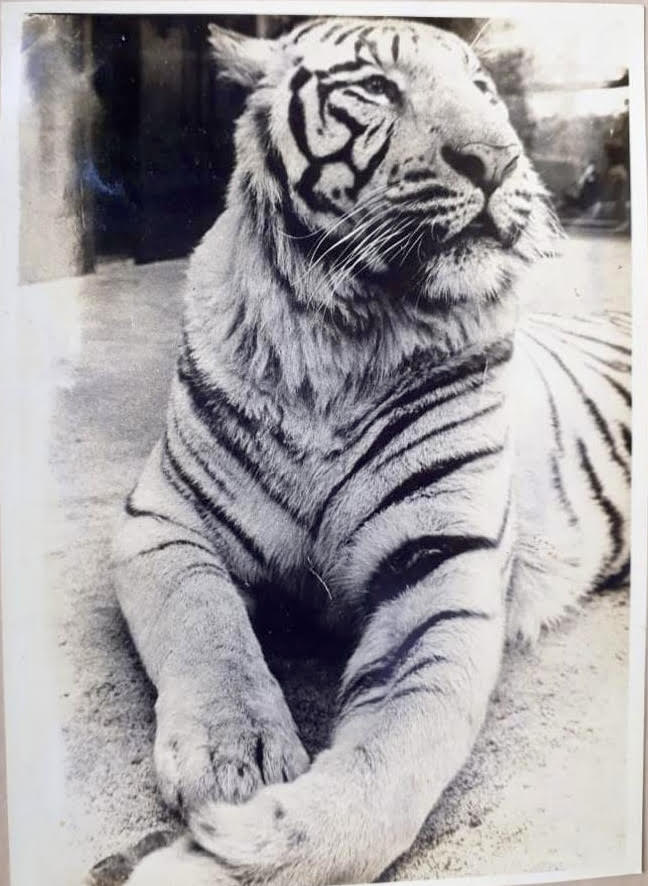
The White tigers continues to remain elusive in the wilderness. But who knows, some day with conservation efforts, or an utter stroke of luck, they might just return back to rule the forests of India once again.
@@@@@@@@@@@@@@@@@
Written by: Natasha Sinha
With Exclusive inputs from Asad Khan, from the Palace of Rewa
Special thanks to Gaurav Dhotre for sharing the genetics of White tigers and Team Kings Lodge for Rewa museum, zoo and palace images.
Photo Courtesy: Special thanks to Asad Khan for sharing exclusive images from the Palace of Rewa, Lalit Rajoria, for the breathtaking Bandhavgarh landscape and White tiger images from Delhi zoo and Team Kings Lodge for the museum images.
******************
Our team at Pugdundee Safaris is happy to organise a day trip to Govindgarh palace and the Rewa museum, on prior request at an additional cost.
Get in touch with our trip curators at Pugdundee Safaris to enjoy a bunch of exhilarating forest experiences.
Phone: +91-011-40132680 Email: [email protected]

